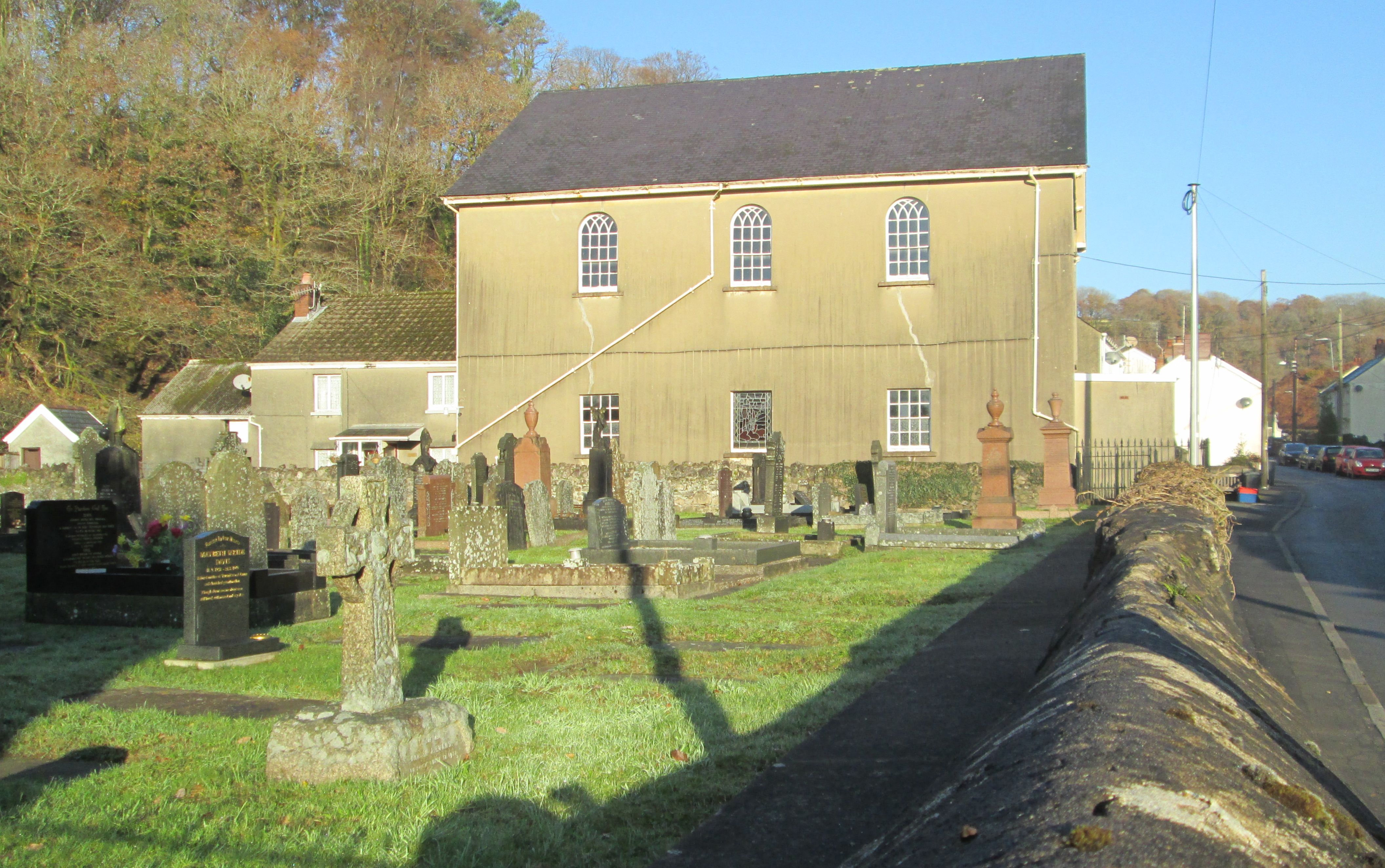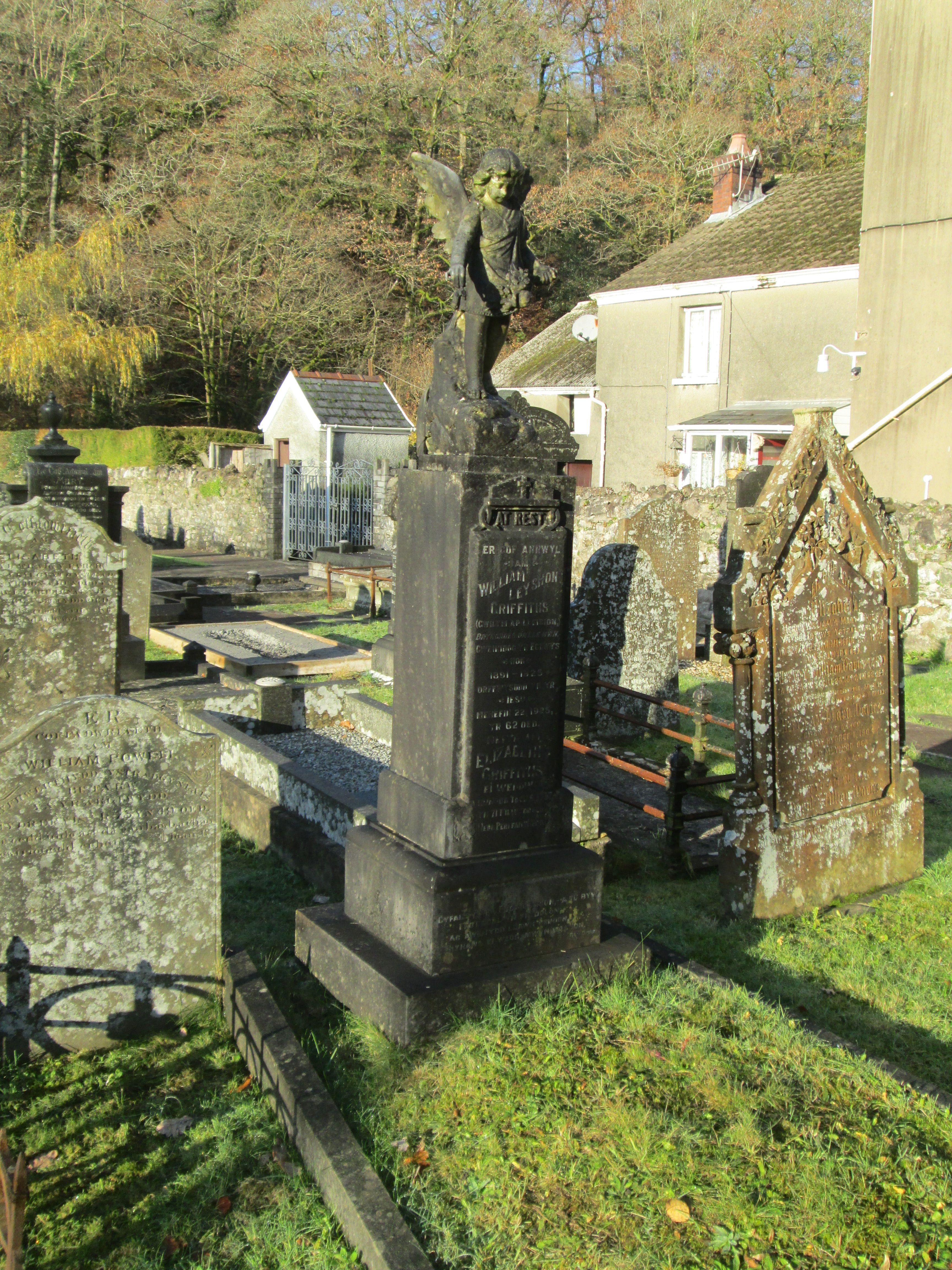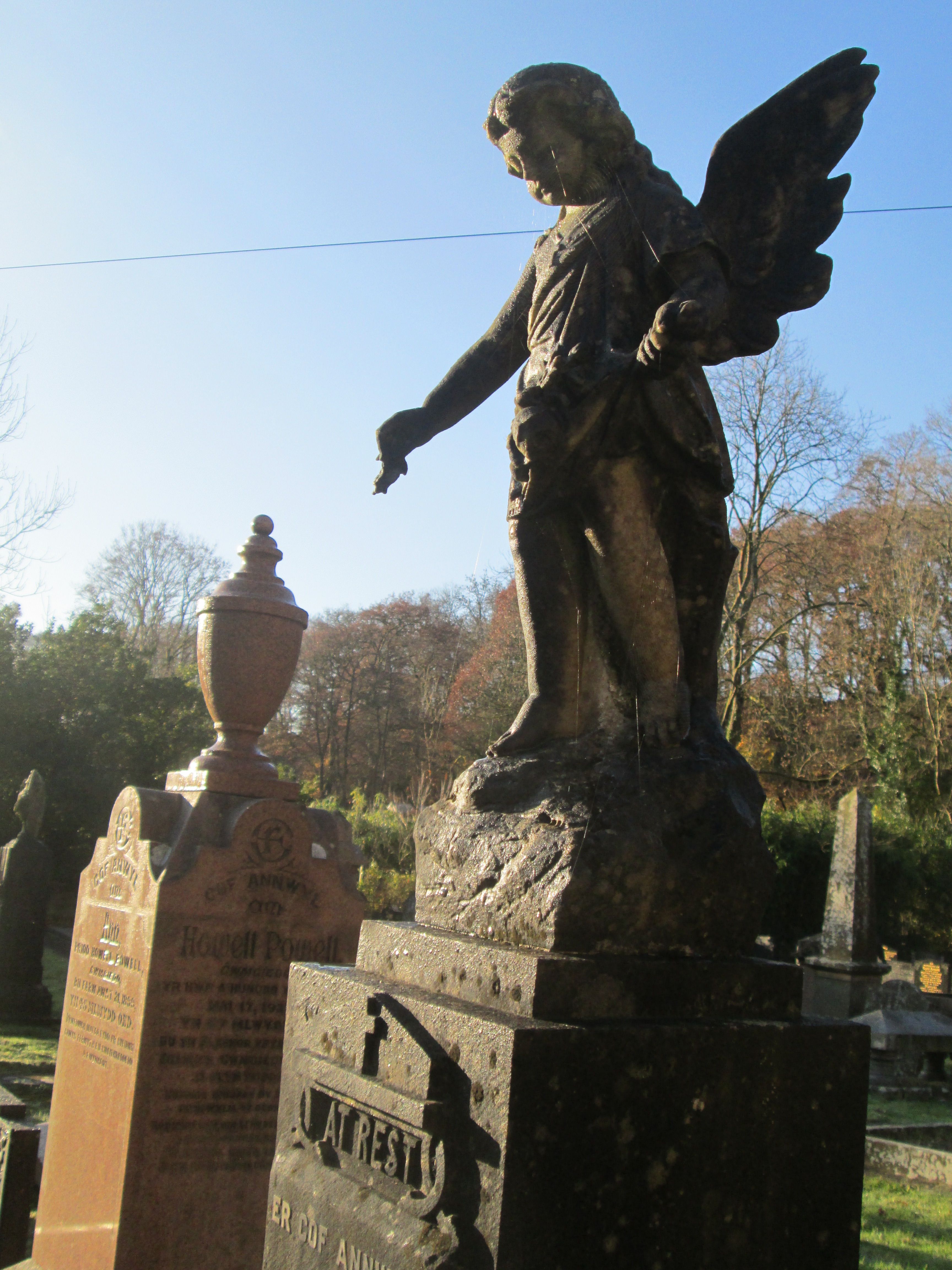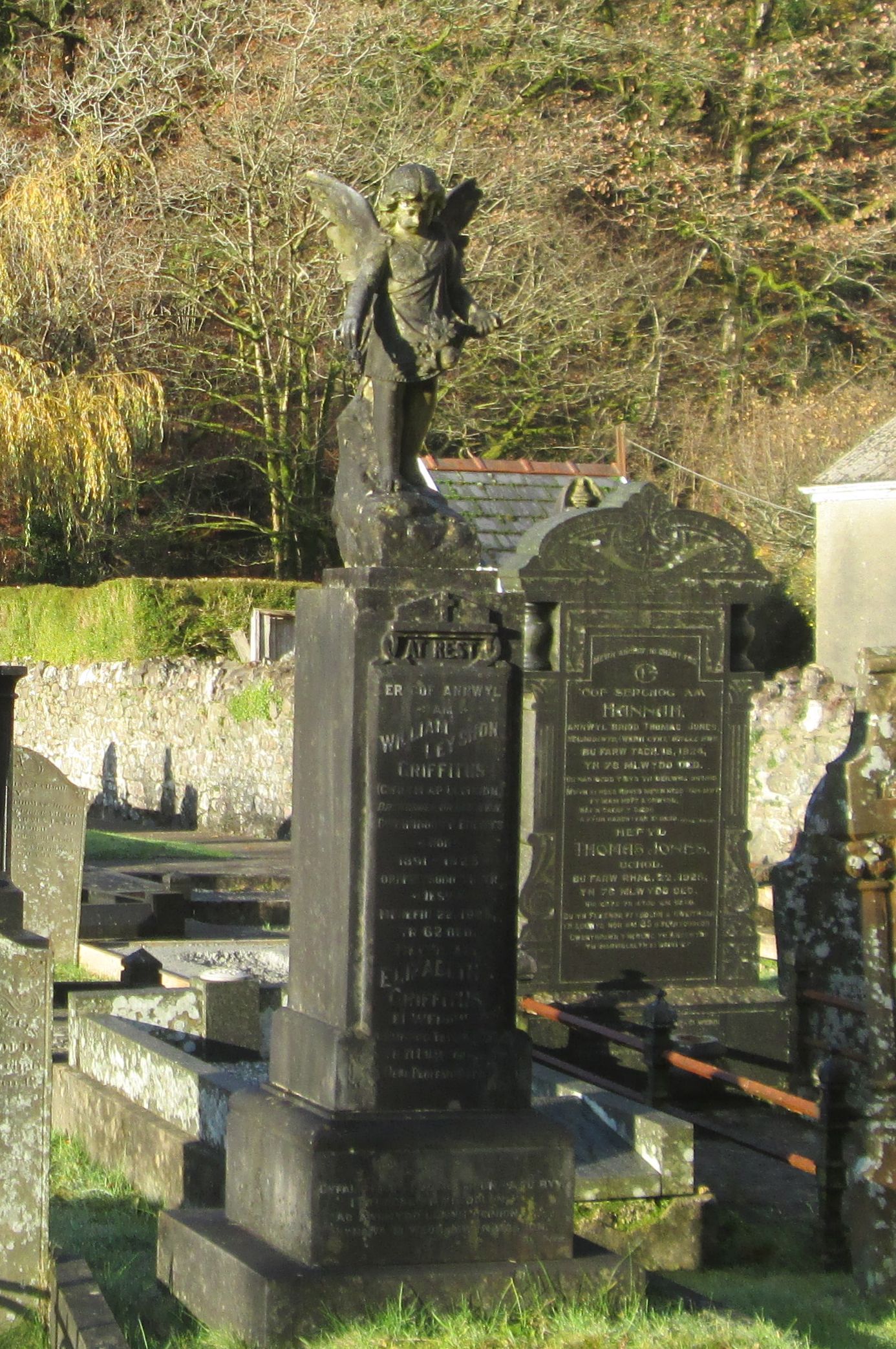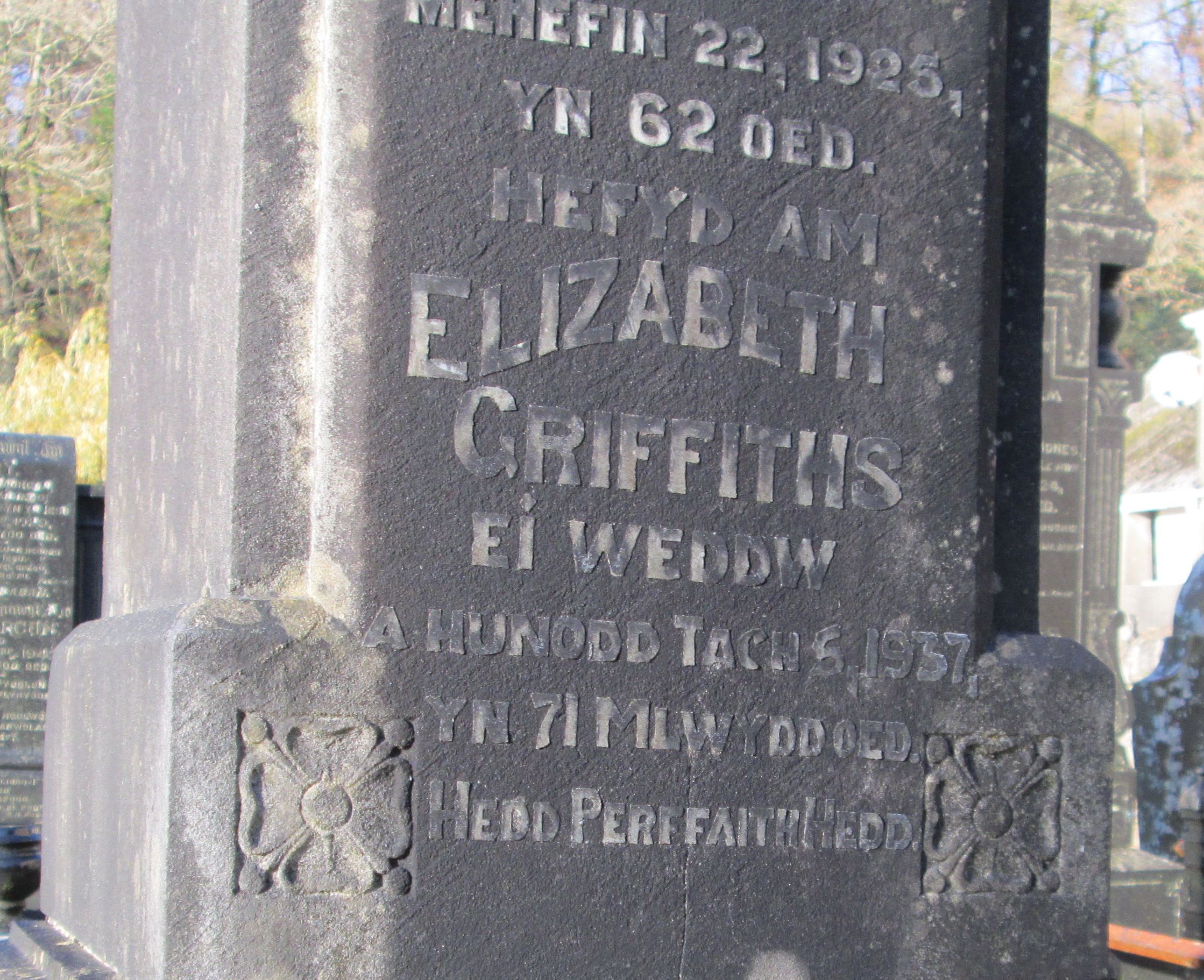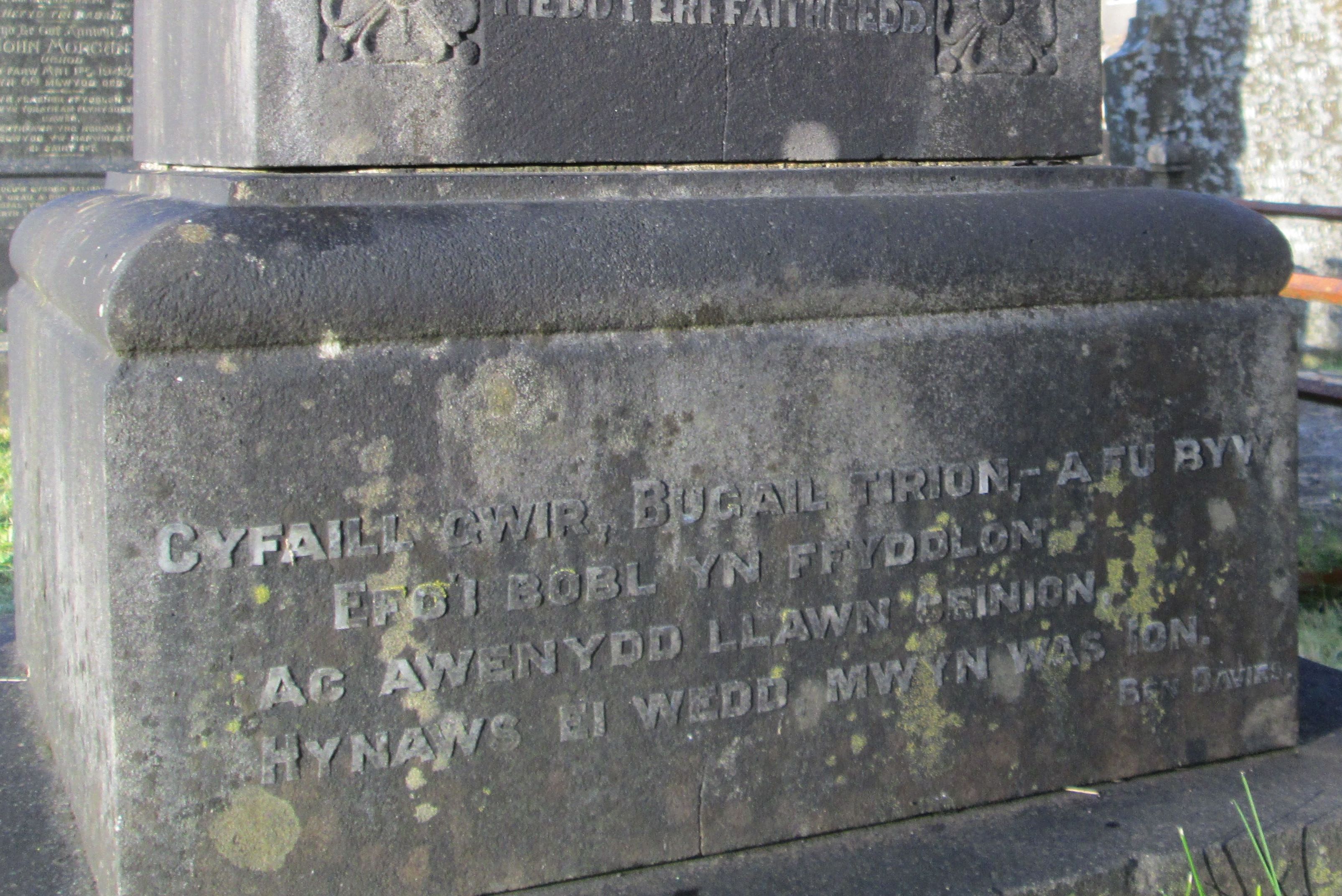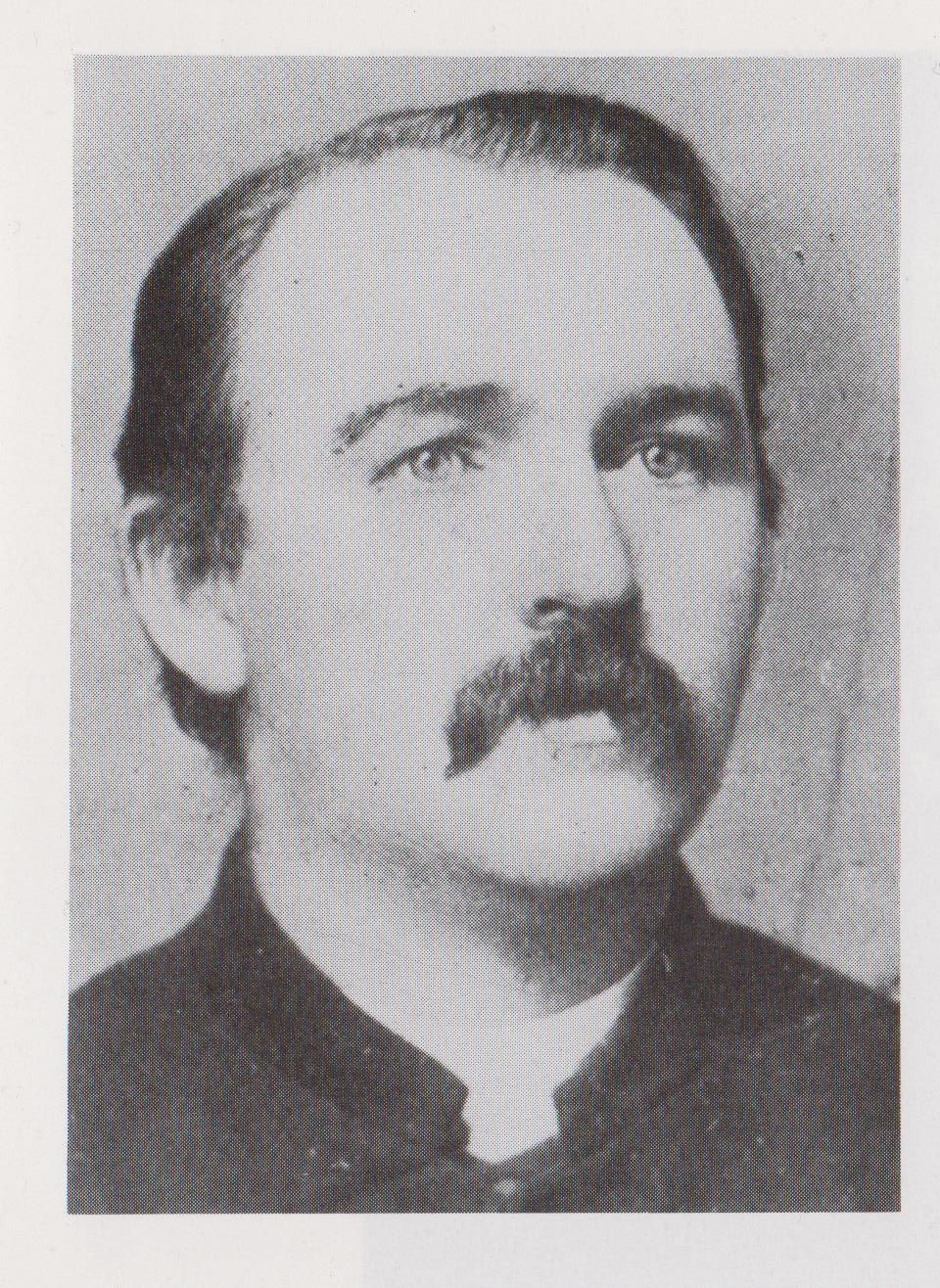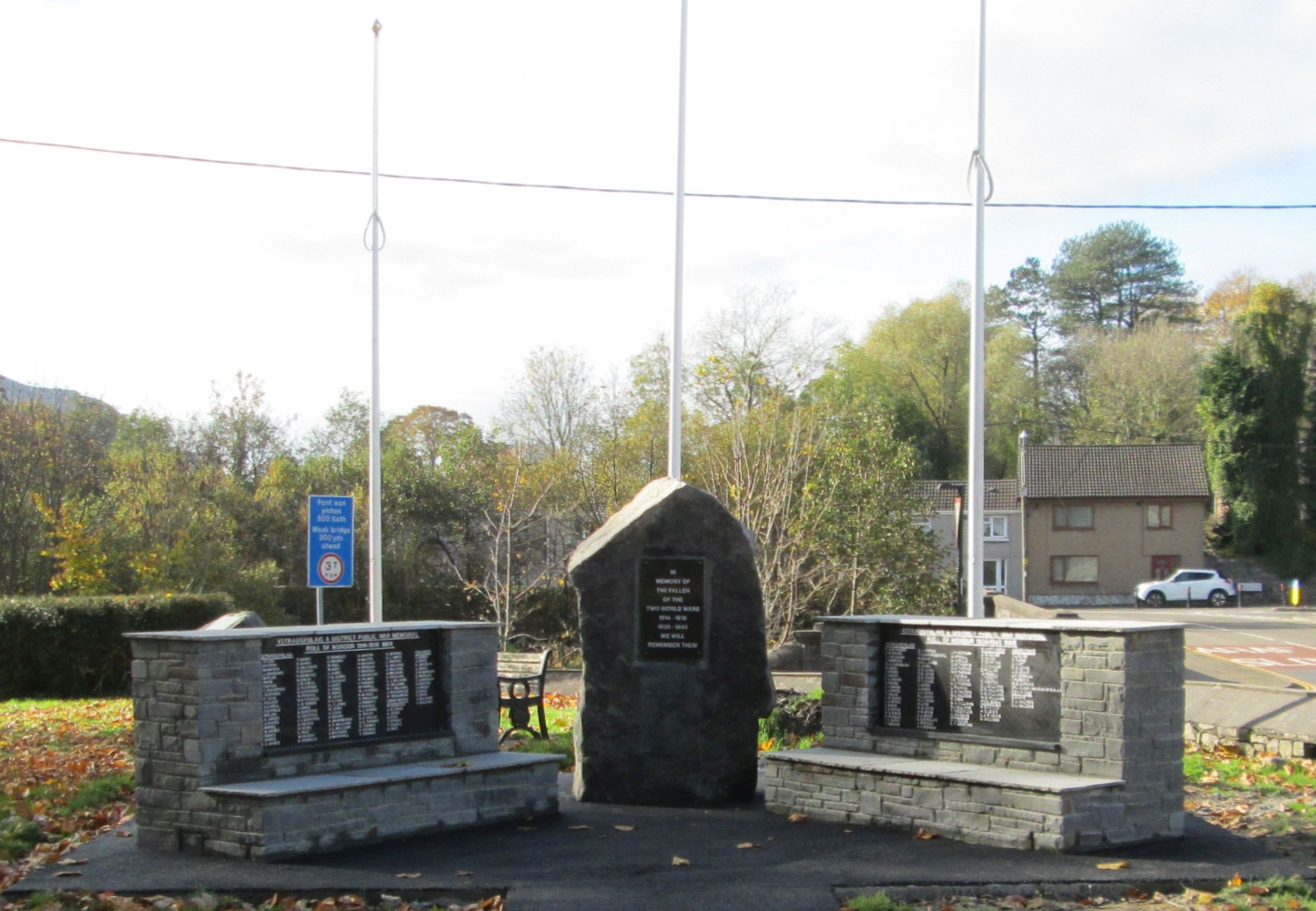Ystradgynlais & District
History and Heritage
William Leyshon Griffiths
The information on this webpage comes from a mixture of sources including:- "Faces and Places of the Parish of Ystradgynlais" by T J Davies; the "Awakening The Giants" leaflet on him from Ystradgynlais District Heritage & Language Society; the myheritage.com website; the Llais local newspaper; and the inscription upon his gravestone. Information on publications comes from the National Library of Wales.
William Leyshon Griffiths was born at Bryngroes (or Brynygroes) Farm, Cwmgiedd. Ystradgynlais on 4th May 1863, the son of Leyshon Griffiths and his wife Ann. He spent his lifetime on the farm where his ancestors had lived since 1605, his family believed to be descendants of Leyshon Thomas, the last Abbot of Neath Abbbey.
He was educated in Cwmgiedd's "British School" and raised as a member of Yorath Calvinistic Methodist Chapel, later choosing to enter the ministry, for which he studied at Arnold College, Swansea and Cardiff University in prepararation.
Aged 30, he became minister of Yorath Chapel in 1893, although his gravestone gives the starting date of 1891, probably implying he preached there for two years before being fully ordained. He was minister there for 32 years, until his death on June 22nd 1925.
During his ministry, he was supported by income from the family farm. He was an enthusiastic teacher of poetry to young people, and an early member of the Workers Education Society. He founded a Sunday School called Pen Pisgah, its name referencing the Biblical mountain from which Moses viewed the Dead Sea. This Sunday School was located in the empty Henglyn Uchaf farmhouse which was gifted to Yorath by a local family. Eisteddfodau and other events were held there by the local community during his ministry.
He married Elizabeth, who died on November 6th 1937, aged 71, and they had one son, Leyshon Hywel Griffiths.
William Leyshon Griffiths was an outstanding poet under his bardic name of Gwilym ap Lleision. He competed in the National Esiteddfod on many occasions and came close to winning the Chair more than once. He was second in Neath in 1918, beiing adjudged a very close second to J T Job, and in the top three in Ammanford in 1922.
He wrote the words to two famous Welsh hymns "Iesu biau'r gan" (To Christ We'll Sing) composed by JT Rees, and "Blodau'r Iesu" (The Fragrant Flowers of Jesus) by Daniel Protheroe. In 1914 he published "Cerddi'r Mynydd Du" a collection of poetry by local bards, with photographs by Llew. E Morgan inspired by the scenery of the Black Mountain.
An article written on him is held at the National Library of Wales, and its reference is at https://copac.jisc.ac.uk/id/54474681. It was in Brycheiniog, volume 4, of 1958, pages 99 to 106, and was titled "Y Parch. William Griffiths : (Gwilym ap Lleision) 1863-1925" by E.P. Jones.
Photographs of Yorath Cemetery
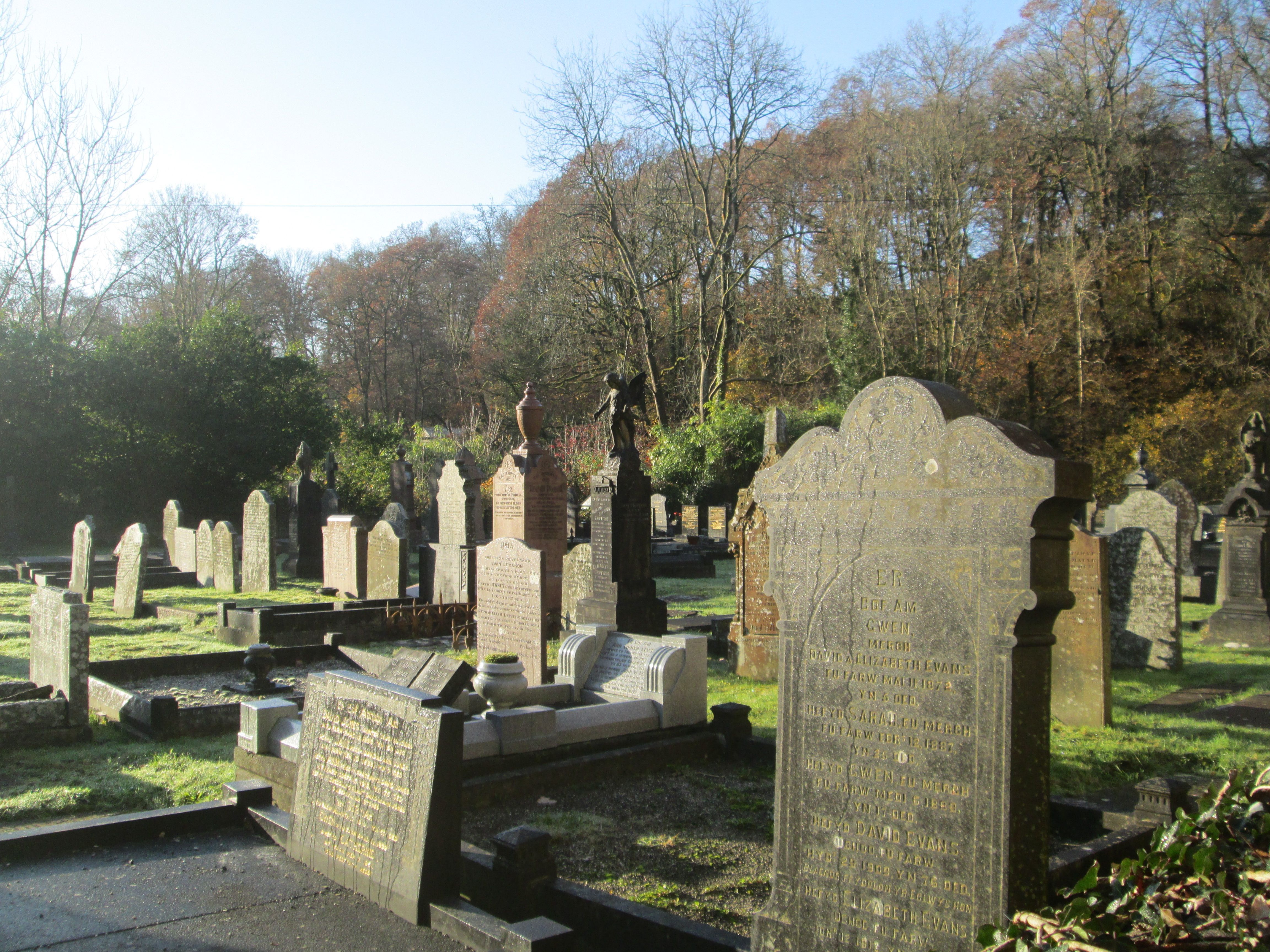
The grave and monument of William Leyshon Griffiths can be seen in the centre of this photograph looking across the whole of the graveyard.
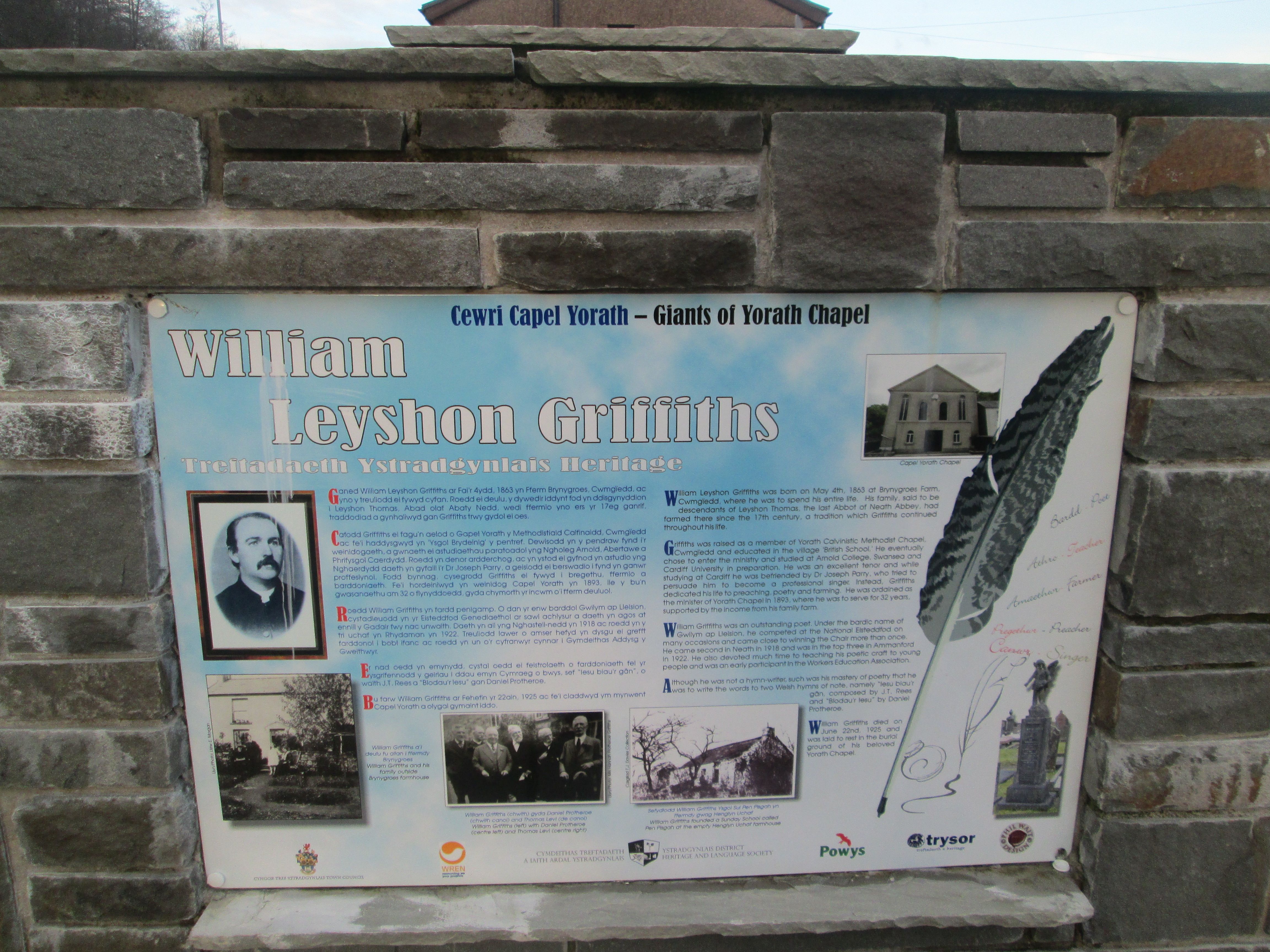
One of the side panels on the David Protheroe Memorial in Rhestr Fawr, Ystradgynlais, is dedicated to William Leyshon Griffiths.
Pen Pisgah
As noted above, Rev William Leyshon Griffiths founded a Sunday School called Pen Pisgah, its name referencing the Biblical mountain from which Moses viewed the Dead Sea. This Sunday School was located in the empty Henglyn Uchaf farmhouse which was gifted to Yorath by a local family. Eisteddfodau and other events were held there by the local community during his ministry.
Initially, in the Llais, Pen Pisgah is referred to as a "schoolroom" but by the mid 1920s, it is somewhat confusingly referenced as "Penpisgah Chapel".
The following information is translated from the book "Cynnau'r Fflam" by John Williams, with thanks. The book was published to celebrate the bicentenary of Yorath Chapel, and of the cause in the Cwmgiedd area.
In 1902, Yorath Chapel established a Sunday school at the head of Palleg, the spiritual home of the Methodists in the Upper Swansea Valley. Unfortunately there are no written records about this Sunday school.
The Daniel family rented 2 farms on the Palleg (Pensarn and Henglyn Uchaf) - the Tredegar estate owned most of the Palleg farms at the time. No one lived in Henglyn Uchaf and the building was offered to Yorath for Sunday school purposes. William Leyshon Griffiths, a neighbour of the Daniels family, was probably behind the idea.
The walls inside the building were pulled down to make one big room. An iron stove was installed in the middle of the floor, with a long pipe going up to the roof like a chimney. On Sunday mornings, one of the Daniel family would light this stove to heat the place, but it was probably a pretty cool place even so.
The name Pen Pisgah was given to the building, which is still the name used to this day, though the place is in ruins. Pisgah was the name of the mountain that Moses climbed to the top of to see the Promised Land on the other side of the Jordan. It is a very suitable name for Henglyn Uchaf, because the old farmhouse at the top of Palleg looks down over Cmwgiedd.
Each year, Yorath chose one of its members to look after Pen Pisgah. It was this man's responsibility to look after the Sunday School's needs for that year.
The Sunday school was open to all the children of the Palleg from all denominations and was very popular for a long time.
A variety of activities were held there. As well as the Sunday school there were eisteddfods and "Penny Readings" competitions there, and there was also a choir at one time.
After the death of the Rev William Leyshon Griffiths in 1925, there was a gradual decline in the Sunday school and the doors were closed in 1938.
The following information on Pen Pisgah comes from the local Llais newspaper.
From the Labour Voice 29th June 1918, comes an article, originally in Welsh, on a walk on the black mountain :-
|
Cychwynodd y cwmni oddiar Bont y Giedd, pob un a'i ysgrepan a'i ffon; a chan ymdaith i fyny hyd Bont Perhiw, aethant i fynyr rhiwiau serth nes cyraedd Pen Pisgah. Hen amaethdy wedi ei gyfaddasu yn ysgoldy, saif hwn ar lecyn hynod o ddymunol, a cheir natur yn ei gwisgoedd goreu yma yr adeg ho o'r flwyddyn. |
The company started off Pont y Giedd, each with its handcloth and stick; and going up to Perhiw Bridge, they went up steep hills until they reached Pen Pisgah. An old farmhouse converted into a schoolroom, this stands on a very pleasant spot, and nature in its best costume is at this time of year. |
From the Labour Voice newspaper 18th January 1919:-
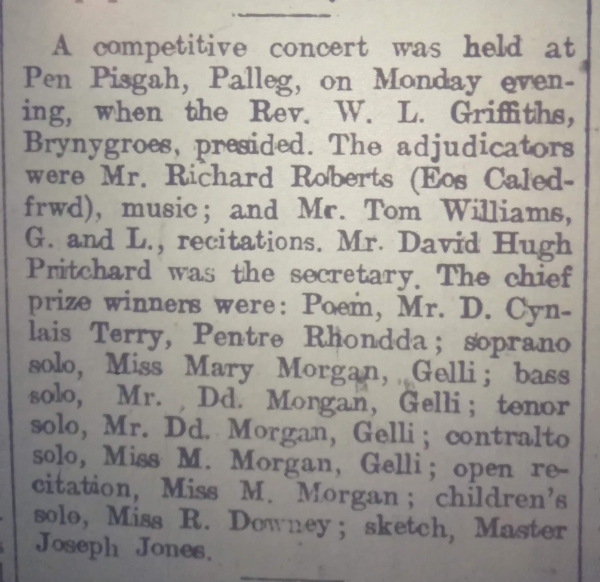
A competitive concert was held at Pen Pishgah, Palleg, on Monday evening when the Rev W.L. Griffiths, Bryngroes, presided. The adjudicators were Mr Richard Roberts (Eos Caledfrwd), music; and Mr Tom Williams, G. and L., recitations. Mr David Hugh Pritchard was the secretary. The chief prize winners were: Poem, Mr D. Cynlais Terry, Pentre Rhondda; soprano solo, Miss Mary Morgan, Gelli; bass solo, Mr David Morgan, Gelli; tenor solor, Mr David Morgan, Gelli; contralto solo, Miss M. Morgan, Gelli; open recitation, Miss M Morgan; children's solo, Miss R. Downey; sketch, Master Joseph Jones.
From the Labour Voice newspaper 17th January 1925:-
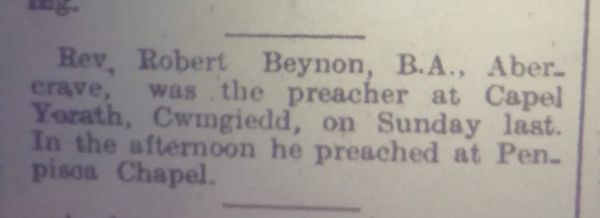
Rev Robert Beynon, B.A., Abercrave, was the preacher at Capel Yorath, Cwmgiedd, on Sunday last. In the afternoon he preached at Penpisgah Chapel.
From the Labour Voice newspaper 23rd January 1926
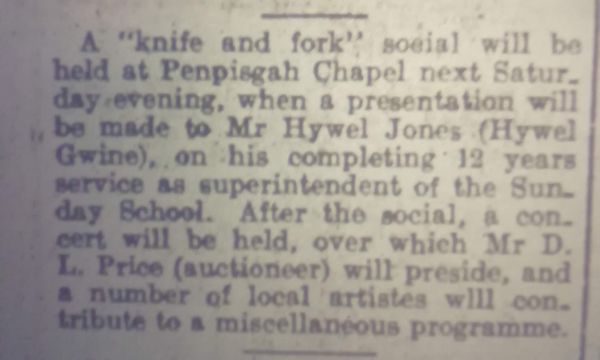
A "knife and fork" social will be held at Penpisgah Chapel next Saturday evening, when a presentation will be made to Mr Hywel Jones (Hywel Gwine), on his completing 12 years service as superintendent of the Sunday School. After the social, a concert will be held, over which Mr D L Price (auctioneer) will preside, and a number of local artistes will contribute to a miscellaneous programme.
Email Yeargroup:
yeargroup@hotmail.co.uk
Email Wolfian Design:
webdesign@wolfianpress.com
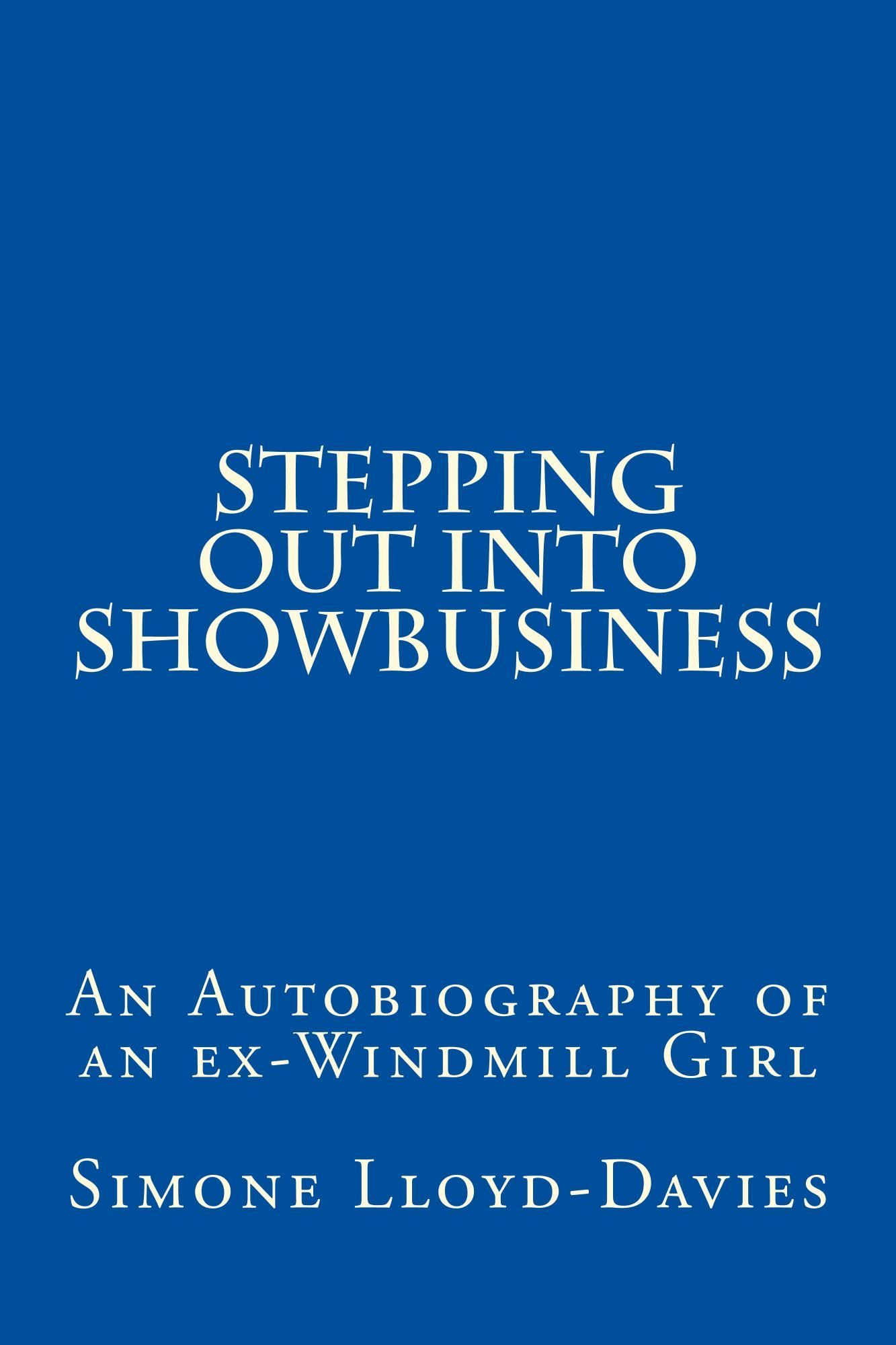
Click the cover to purchase the paperback
Simone dreamed of becoming a showbusiness star during her nights in the air raid shelter in the garden of her home in Southall, during World War Two. After joining the A.T.S. in the war, she became part of the concert party entertaining the troops, eventually joining the Windmill Theatre.
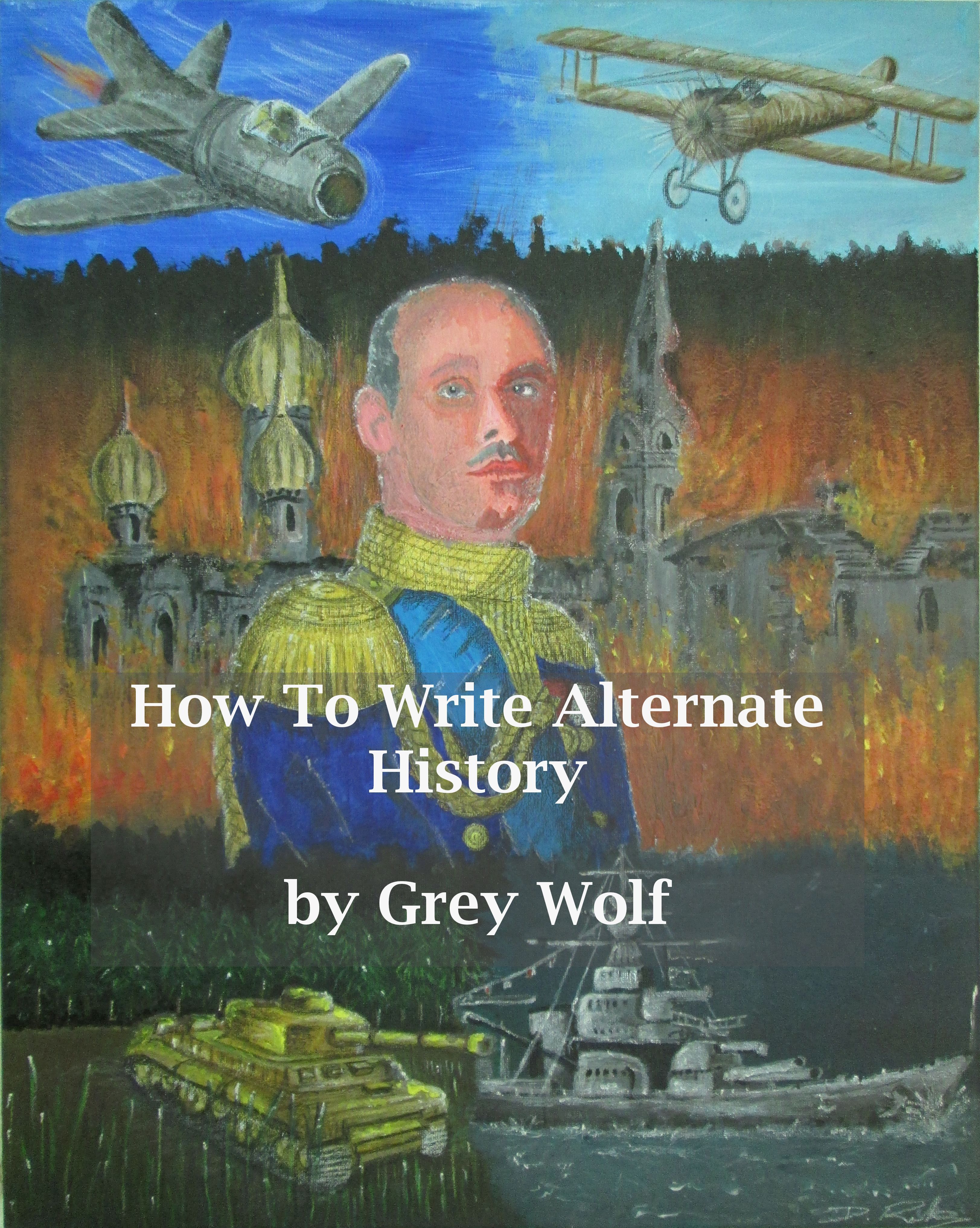
Click the cover to purchase the paperback
How To Write Alternate History is a series of articles by Grey Wolf, examining subjects such as the identity of man, whether man makes the weather, how the everyday in an alternate world is going to be changed and what names for music, vehicles, weapons etc would be different.



















